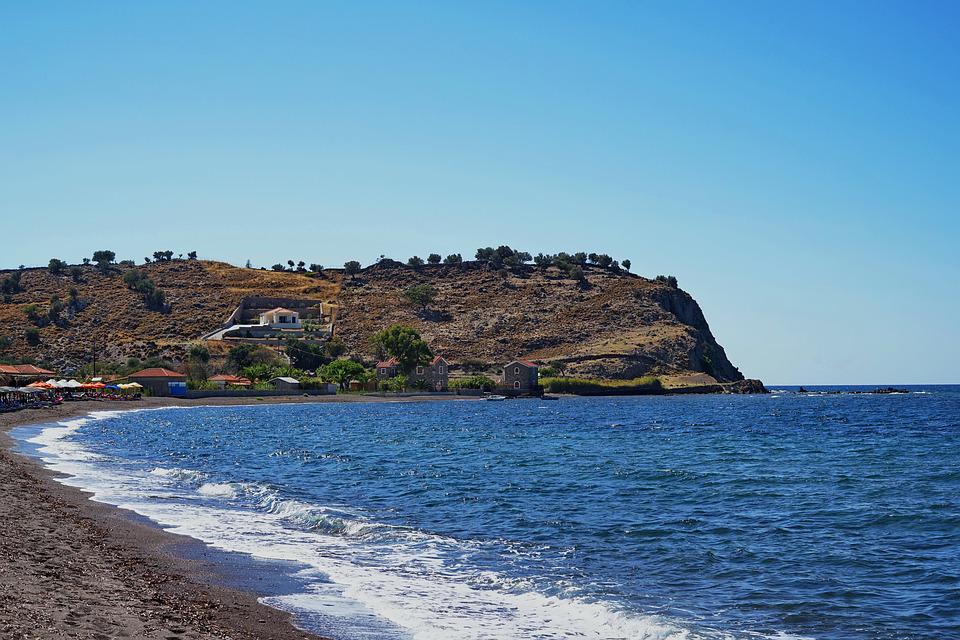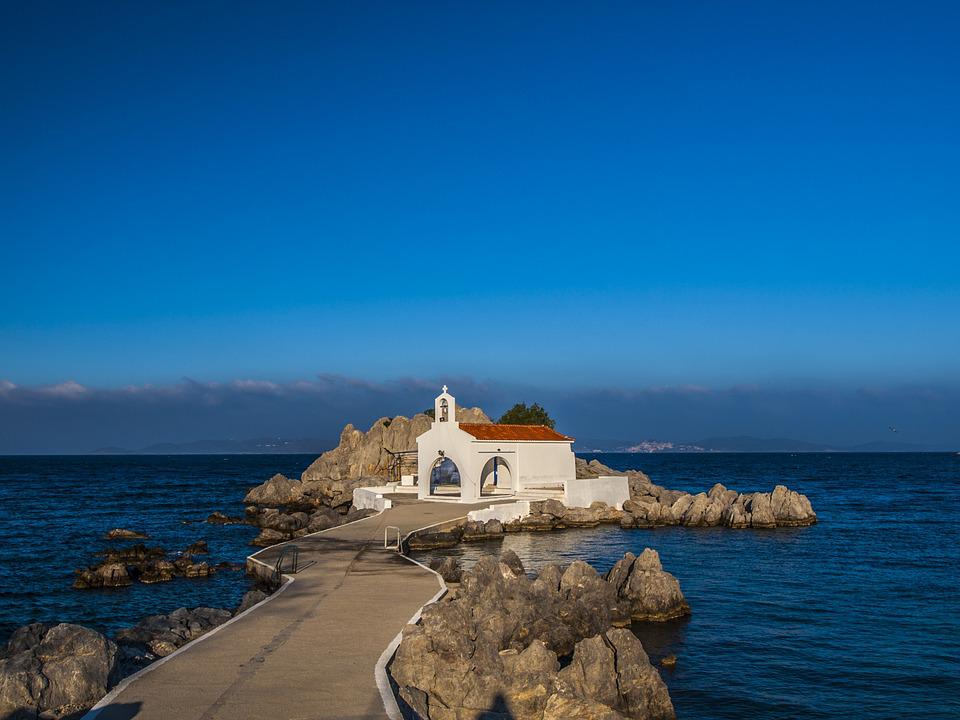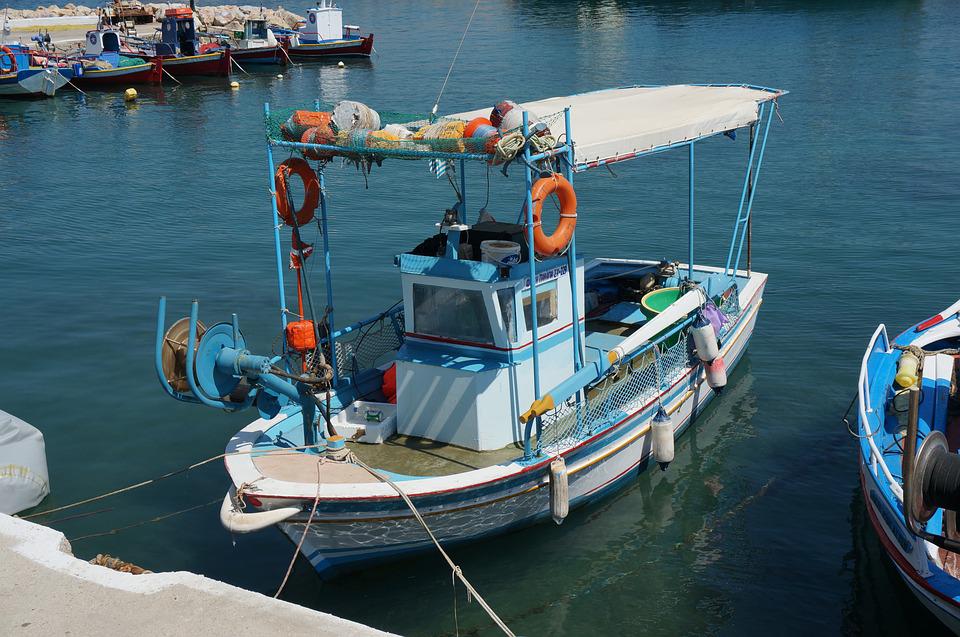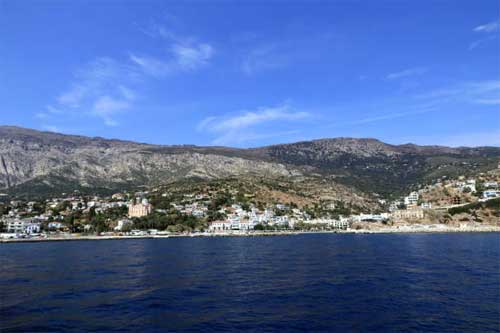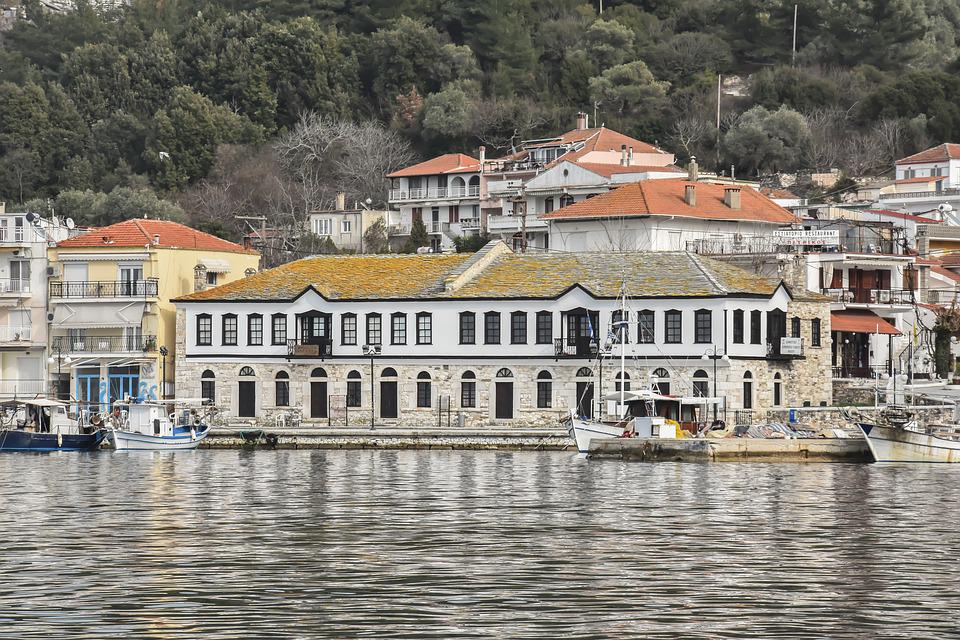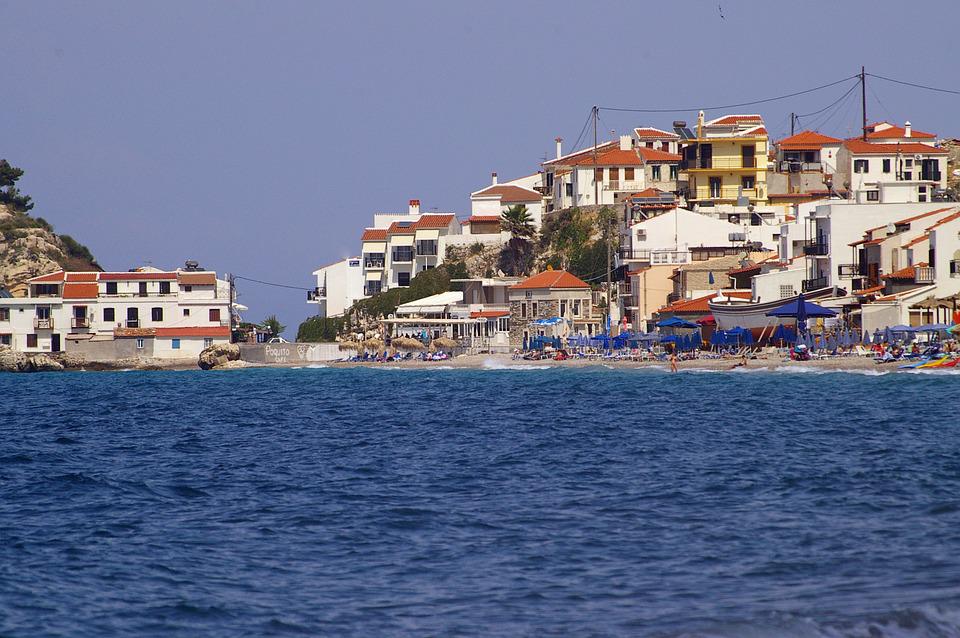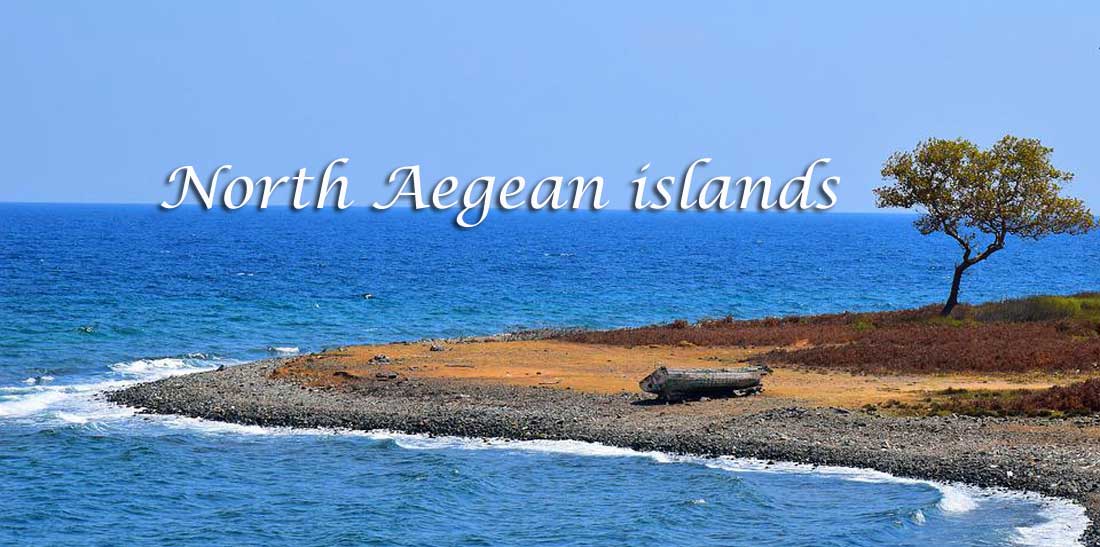Guide to the North Aegean islands in Greece
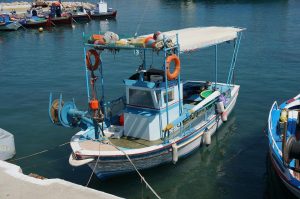 An ideal destination the islands of the North Aegean have maintained a relatively low growth profile. Recently, breaking away from the fashion of the islands of the barren line, they are attracting more and more travellers for value for money holidays with authentic colour.
An ideal destination the islands of the North Aegean have maintained a relatively low growth profile. Recently, breaking away from the fashion of the islands of the barren line, they are attracting more and more travellers for value for money holidays with authentic colour.
The traditional villages, the green paths and the lunar landscapes inland, the vast beaches, the sightseeing in the fossil forests, the picturesque fishing villages and the variety of local flavours are some of the highlights of the holidays on this side of the Aegean.
The North Eastern Aegean Islands are far less visited than the popular Cyclades and Dodecanese archipelagos.
The North Eastern Aegean Islands have much to offer the foreign holidaymaker including forested mountains, uncluttered beaches and fabulous walking trails through lush scenery which is hard to find on the barren, rocky islands further south.
The seven major islands in the groups are Chios, Ikaria, Lesvos, Limnos, Samos, Samothraki and Thassos. All of the islands, with the exception of Samothraki and Thassos, are nearer the west coast of Turkey than they are to the Greek mainland.
The islands are scattered at long distances from each other which makes island-hopping less practical here than in the other more compact Aegean groups.
Location
If we look at a map of Greece we can identify them, as the name implies, in the Northern Aegean Sea and precisely to the north of the two archipelagos of the Cyclades and the Dodecanese and to the east of the Sporades and Euboea. They are located opposite Turkey, in some cases very close.
Mostly large islands with many different faces require you to spend several days enjoying them without getting tired, while the means of transport is usually necessary. Uncomplicated and without a secular profile, they are offered for nature-loving but also for family vacations, for lovers of tradition and local colour, for low budget and gourmet travelers.
Mytilene and Chios are the largest and most special islands, with intense architectural interest and gastronomic surprises. Samos wakes up the nature lovers and the fans of the sea and the flavours’ without falling behind in its youthful life.
Ikaria is famous for the beaches, the festivals and the inimitable relaxed philosophy of its inhabitants, while Lemnos, with its strong papers the beaches, the nice routes and good food, gathers more low profile travellers and lovers of the original.
Eastern Aegean less known to holyday package tourism, makes it very attractive for those who love beauty, tranquillity and culture. The archipelago and the islands that compose it, very different from each other, offer unspoiled nature, very beautiful sea and beaches and a past rich in history that can still be breathed in traditional villages.
Being very close to the coast of Asia Minor, these islands have passed through in the past many innovations from the East which have led to a great development. Furthermore, having been allied or dominated by various conquerors, they have acquired different traditions and cultures from the various civilizations that have enriched them and made them very varied also from an architectural point of view.
Geography
The North Aegean islands boast diverse landscapes that range from rugged mountains to pristine beaches. Limnos, with its volcanic terrain and golden shores, offers a striking contrast to the lush greenery of Samos. Chios is famous for its mastic trees, while Icaria’s mountainous terrain provides breath taking views of the Aegean Sea.
Samothraki stands out with its majestic Mount Saos, shrouded in myth and mystery. Thassos enchants visitors with its emerald forests and crystal-clear waters. Each island has a unique character shaped by centuries of history and natural beauty waiting to be explored.
From ancient ruins to charming villages, the geography of these islands sets the stage for unforgettable adventures. Whether you’re seeking relaxation on sandy beaches or hiking through rolling hills, the North Aegean islands offer something for every traveler seeking an escape from the ordinary.
Attractions
The North Aegean islands boast a plethora of attractions that cater to all types of travelers. From stunning beaches with crystal-clear waters to picturesque villages steeped in history, there is something for everyone to enjoy.
Chios, known for its medieval villages and mastic production, offers visitors the chance to explore ancient ruins and sample local delicacies. Samos, birthplace of the famous mathematician Pythagoras, boasts lush landscapes dotted with vineyards producing excellent wines.
Limnos is a paradise for nature lovers with its diverse flora and fauna, while Icaria attracts those seeking tranquillity and relaxation on its unspoiled beaches. Samothraki’s rugged beauty and natural hot springs are perfect for outdoor enthusiasts looking to unwind in nature.
Thassos charms visitors with its emerald green forests and archaeological sites showcasing its rich history. Whether you’re into hiking, sunbathing, or exploring ancient ruins, the North Aegean islands have something special waiting for you to discover.
Economy
The economy of the North Aegean islands is diverse and dynamic, shaped by industries such as agriculture, tourism, and shipping. Limnos boasts a thriving agricultural sector, known for its high-quality wine production and fertile soil. Samos is famous for its sweet Muscat wine and olive oil production, providing a significant economic boost to the island.
Chios stands out for its mastic cultivation industry, producing this unique resin with various uses in cosmetics and gastronomy. Icaria’s economy revolves around agriculture and fishing, offering visitors a glimpse into traditional Greek village life.
Samothraki attracts nature lovers with eco-tourism opportunities that contribute to the local economy sustainably. Thassos benefits from both tourism and marble mining industries, showcasing the island’s natural beauty alongside its rich geological resources.
The economy of these islands reflects their distinct characteristics while contributing to Greece’s overall prosperity.
Best time to visit
When planning a trip to the North Aegean islands, considering the best time to visit can make all the difference in your experience. The ideal time to explore these stunning destinations is during the spring and fall months when temperatures are mild, crowds are thinner, and nature is at its most vibrant.
Springtime, from April to June, offers pleasant weather for sightseeing and outdoor activities without the scorching heat of summer. The blooming wildflowers add a colorful touch to the landscapes while providing perfect conditions for hiking or exploring historical sites.
In contrast, autumn (September to October) brings cooler temperatures ideal for leisurely strolls through charming towns or relaxing on pristine beaches without feeling overwhelmed by tourists. Plus, you might catch some local festivals celebrating culture and traditions during this period.
Whether you prefer mild weather or fewer crowds, both spring and fall offer fantastic opportunities to discover the beauty of Limnos Samos Chios Icaria Samothraki Thassos in their full glory.
Samos
Samos, lying off the coast of Asia Minor, is renowned for its lush landscapes, stunning beaches, and rich historical heritage. The island is famously known as the birthplace of the ancient mathematician Pythagoras and the philosopher Epicurus. Visitors to Samos can explore the ancient ruins of the Heraion, a sanctuary dedicated to the goddess Hera, and the Eupalinian aqueduct, an engineering marvel of ancient Greece.
Samos is the top holiday spot in the archipelago – Anthony and Cleopatra are said to have holidayed here and since the 1980s hordes of tour groups have followed in their footsteps, flying directly to the island on cheap charter flights from several European destinations.
The island boasts some superb sandy beaches and is awash with tourist facilities. But if you take the time to explore beyond the busy beach resorts you’ll find a beautiful mountainous interior dotted with unspoilt villages, rushing streams and dramatic ravines carpeted with wild flowers. The island’s three ports and international airport make it the transport hub of the North Eastern Aegean.
Ikaria
Ikaria, named after Icarus from Greek mythology, is known for its rugged terrain, scenic beauty, and the remarkable longevity of its inhabitants. The island’s health benefits are attributed to its natural hot springs, Mediterranean diet, and relaxed lifestyle.
Ikaria’s landscape is characterized by mountainous regions, pristine beaches, and charming villages where time seems to stand still. The island has a rich history dating back to ancient times, with numerous archaeological sites, including the Temple of Artemis and the medieval Castle of Koskina. Visitors to Ikaria are drawn to its serene environment, therapeutic hot springs, and vibrant local festivals, where traditional music and dance play a central role.
Idiosyncratic Ikaria, on the other hand, attracts relatively few foreign visitors and the islanders steadfastly refuse to pander to the demands of the modern day tourist. Ikaria is not a package holiday destination but if you want a green and tranquil island with good beaches, wonderful hiking trails and traditional tavernas mercifully free of foreign influence then this is the place for you.
Chios
Chios offers a compromise between the mid-summer mayhem of Samos and Ikaria’s somewhat endearing “take it or leave it” approach to tourism. The island has some of the best beaches in the group and some of the most fascinating medieval villages in the whole of Greece – the so-called “mastic villages”, built as centres of production for the highly prized resin drawn from the local mastic bushes. The Turkish sultans and their harems couldn’t get enough of the addictive mastic chewing gum and the resin was used for centuries in paints, cosmetics and drugs before the advent of petroleum based products.
Lesbos
Lesbos, the third largest Greek island, is renowned for its stunning landscapes, rich history, and vibrant cultural scene. The island is famous for producing ouzo, a traditional Greek anise-flavored spirit, and for its olive oil, derived from the extensive olive groves that cover its hills.
Lesbos is home to the ancient poet Sappho and features numerous historical sites, including the Byzantine Castle of Mytilene and the Roman aqueduct. The Petrified Forest of Lesvos, a UNESCO Global Geopark, offers a fascinating glimpse into the island’s geological past. Lesvos combines cultural depth with natural beauty, making it a diverse and appealing destination.
Lesbos has a rather marked extension and coastal development, so those who decide to organize a beach holiday on this island are spoiled for choice, as they can choose between sandy, pebble, pristine or fully serviced beaches, always, however, lapped by a stupendous sea, clear and clean.
Limnos
Limnos, located in the northern Aegean Sea, is characterized by its diverse landscape of rolling hills, sandy beaches, and fertile plains.
The island is steeped in mythology, often associated with Hephaestus, the god of fire and metalworking. Limnos’ capital, Myrina, features a picturesque harbor, a medieval castle, and neoclassical architecture. The island is also known for its agricultural products, particularly wine, cheese, and honey.
Visitors can explore ancient ruins, such as the prehistoric settlement of Poliochni and the sanctuary of Kavirio. Limnos offers a tranquil retreat with its unspoiled nature, traditional villages, and rich cultural heritage.
The volcanic island of Limnos remains largely untouched by mass tourism as does stunning Samothraki which boasts the highest mountain in the Aegean and has some of the most dramatic scenery of all the Greek islands.
Samothraki
The Romans used to holiday on Samothraki and bathe in the curative waters of the island’s hot springs which still attract visitors from all over Europe and beyond. Lush valleys, forested mountain slopes and cascading waterfalls make the island a favourite holiday spot for hikers.
Samothraki, known for its wild beauty and mystical aura, is famous for the Sanctuary of the Great Gods, an important religious site in ancient Greece. The island’s rugged terrain, with its towering Mount Saos, lush forests, and cascading waterfalls, offers a haven for nature lovers and adventure seekers.
The picturesque village of Chora, with its traditional stone houses and narrow streets, provides a glimpse into the island’s past. Samothraki’s untouched landscapes and spiritual significance make it a unique destination, attracting those looking for tranquility and a connection with nature.
Thassos
Thassos is the most northerly of all the Greek islands and has been a popular package holiday destination since the 1990s. Summer visitors pour in from the Greek mainland, Britain and Germany and many eastern European countries.
Thassos, often referred to as the “Emerald Island” due to its lush greenery, is known for its rich history, beautiful beaches, and high-quality marble. The island’s verdant mountains, olive groves, and crystal-clear waters create a stunning natural environment.
Thassos has a rich history dating back to ancient times, with archaeological sites such as the ancient Agora and the Aliki archaeological site. The island is also famous for its traditional villages, where visitors can experience local customs and cuisine. Thassos offers a perfect blend of historical exploration, natural beauty, and relaxation.
